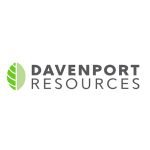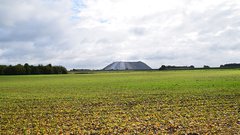DAV brings in potash expertise towards establishing JORC
Published 19-JAN-2018 09:26 A.M.
|
3 minute read
Hey! Looks like you have stumbled on the section of our website where we have archived articles from our old business model.
In 2019 the original founding team returned to run Next Investors, we changed our business model to only write about stocks we carefully research and are invested in for the long term.
The below articles were written under our previous business model. We have kept these articles online here for your reference.
Our new mission is to build a high performing ASX micro cap investment portfolio and share our research, analysis and investment strategy with our readers.
Click Here to View Latest Articles
Davenport Resources (ASX:DAV) has engaged a high-profile mineral industry consultancy Micon International to conduct a review of historic exploration data from the Ebeleben and Muhlhausen-Nohra potash mining licenses in Germany.
DAV’s prime objective is to establish an initial JORC Resource estimate on land contained within its mining licenses in the South Harz Basin. Having acquired the licenses from the German agency, ‘Bodenverwertungs-und-verwaltungs’ (BVVG) in October last year.
As part of the acquisition, DAV acquired existing historical data which was sufficient to declare a conceptual Resource (in accordance with Russian standards in the German Democratic Republic (GDR) after World War II). DAV announced a Resource of 356 million tonnes at 16.1% potassium oxide (K2O) for 57.4 million tonnes of contained K2O. According to DAV’s estimates, this equates to an equivalent 91 million tonnes of potassium chloride (KCI).
At the same time, it’s worth noting that this is an early stage play and investors should seek professional financial advice if considering this company for their portfolio.
On its other mining license (Muhlhausen-Nohra), DAV has declared a historic resource consisting of two different types of mineralisation. In the Hatsalz category (a mixed salt that includes sulphates), DAV has declared 234 million tonnes at 14.4% potassium oxide for 33.8 million tonnes of contained potassium oxide. This is further supplemented by an additional 5.8 million tonnes of contained potassium oxide, contained in carnalltite, an alternative type of mineralisation to Hatsalz.
Given the lack of in-house experience regarding former-USSR mining standards, DAV has turned to Micon International.
Micon specialises in converting historical resources obtained in the former USSR, under a GDR system that differs from the commonly-accepted JORC standard used by most developed countries. DAV hopes this expertise can be used to model the original data it acquired and compile a resource estimate compliant with the JORC 2012 Code.
Davenport Managing Director Chris Bain said: “The quality of data collected from Ebeleben and Miihlhausen-Nohra over several drilling campaigns dating back to the 1970s gives us confidence that we will soon be able to declare JORC-compliant inferred resources for both projects.
“To achieve this without needing to undertake further drilling will be a tremendous boost to Davenport’s plans to return the South Harz Basin to its former glory as one of the main potash-producing regions of the world. This will reduce development time, and costs, significantly.”
Micon is expected to complete its assessment and publish its findings within the next six months, thereby enabling DAV to critically assess its chances of developing an economically-viable potash project in Germany.
More about Potash
Potash is a generic term that describes ‘potassium salts’ in broad terms and often used wherever soil potassium levels are inadequate, which helps boost plant health and growth rates.
Potash is one of the three primary nutrients needed for healthy plant growth: nitrogen, potassium and phosphorus. Potash is widely used as a constituent of fertilisers and is available in forms such as SOP (sulphate of potash), MOP (muriate of potash), as well as other more exotic variants.
Due to its broadscale agricultural application, the demand for potash is highly correlated with production levels.
Potash is mainly extracted from underground evaporation, rock formations or even large bodies of water such as the Dead Sea, located between Israel, the West Bank and Jordan.
General Information Only
S3 Consortium Pty Ltd (S3, ‘we’, ‘us’, ‘our’) (CAR No. 433913) is a corporate authorised representative of LeMessurier Securities Pty Ltd (AFSL No. 296877). The information contained in this article is general information and is for informational purposes only. Any advice is general advice only. Any advice contained in this article does not constitute personal advice and S3 has not taken into consideration your personal objectives, financial situation or needs. Please seek your own independent professional advice before making any financial investment decision. Those persons acting upon information contained in this article do so entirely at their own risk.
Conflicts of Interest Notice
S3 and its associated entities may hold investments in companies featured in its articles, including through being paid in the securities of the companies we provide commentary on. We disclose the securities held in relation to a particular company that we provide commentary on. Refer to our Disclosure Policy for information on our self-imposed trading blackouts, hold conditions and de-risking (sell conditions) which seek to mitigate against any potential conflicts of interest.
Publication Notice and Disclaimer
The information contained in this article is current as at the publication date. At the time of publishing, the information contained in this article is based on sources which are available in the public domain that we consider to be reliable, and our own analysis of those sources. The views of the author may not reflect the views of the AFSL holder. Any decision by you to purchase securities in the companies featured in this article should be done so after you have sought your own independent professional advice regarding this information and made your own inquiries as to the validity of any information in this article.
Any forward-looking statements contained in this article are not guarantees or predictions of future performance, and involve known and unknown risks, uncertainties and other factors, many of which are beyond our control, and which may cause actual results or performance of companies featured to differ materially from those expressed in the statements contained in this article. S3 cannot and does not give any assurance that the results or performance expressed or implied by any forward-looking statements contained in this article will actually occur and readers are cautioned not to put undue reliance on forward-looking statements.
This article may include references to our past investing performance. Past performance is not a reliable indicator of our future investing performance.





